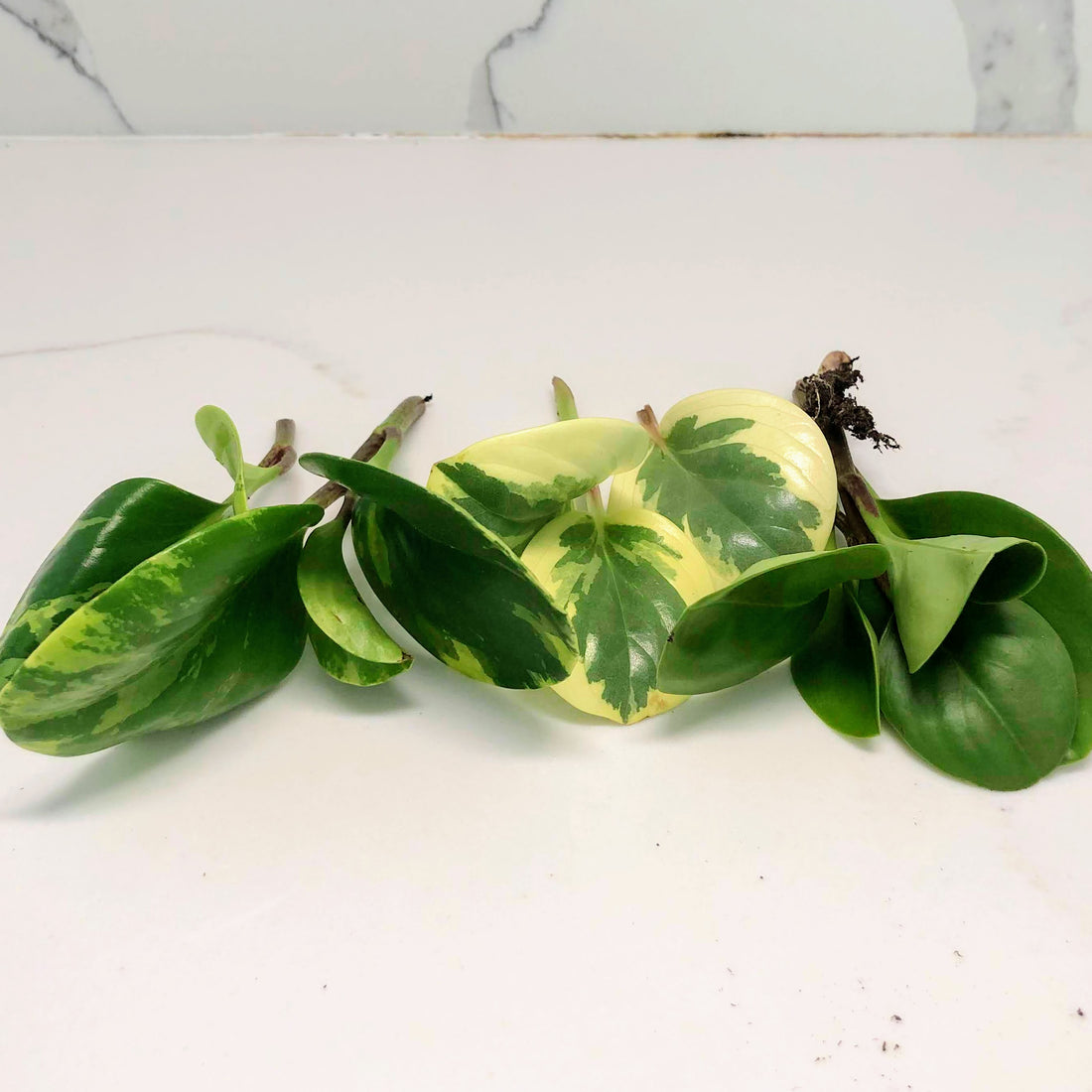
Peperomia Care 101: Unlock the Secrets to Thriving Indoor Houseplants!
Peperomia has been one of the easiest plants for me to keep alive—it’s almost impossible to kill! These little beauties thrive with minimal care and reward you with lots of new growth. With their variety of leaf shapes, sizes, and colors, they’ve quickly become a favorite of mine. Whether you’re just starting out or have a ton of plants already, peperomias are the perfect low-maintenance addition to any collection!
Here’s how I’ve been able to keep my peperomia happy and thriving:
Watering

Water from Bottom Up! I've killed some Peperomia more than once! I found out after a while that the plant is prune to root rot. So I carefully water them from bottom up. Here is what I do: Place the Plant in a well-drain Pot. Fill up a bowl with water, only quarter filled. Place the whole Pot inside the bowl, let the water sink in for 30 minutes. Remove the pot and let the plant dry out.
Only water when the Soil looks and feels dry. It might be around 7-10 days. Overwatering will kill the plants.
They do have Firm and Strong Leaves, if they feel floppy or soft, then the plant needs more moisture.
If you don't like the bottom up method of watering, you can do the following also: Check the soil, and if it feels dry, it’s time to water. Water thoroughly, allowing excess water to drain out of the pot.
Peperomias prefer to dry out slightly between waterings.
Light
Ideally, Peperomia likes Bright, indirect light is the best for vibrant growth and leaf color. They do tolerate lower light, but growth will be slower, and leaves may lose some of their vibrancy. Do NOT put any Peperomia under Direct sunlight, unfortunately Sun can scorch their leaves and Plant will eventually die.
Humidity & Temperature
Peperomia thrive in typical indoor temperatures, between 65°F and 80°F (18°C - 27°C). I put mine indoor and they seem to be liking the temperature. Humidity, Peperomias enjoy moderate humidity but will do fine in normal household conditions. You can increase humidity with a pebble tray or misting if the air is particularly dry.
Soil
Not picky with soil. At Blissful Plants.co, we love the use of Compost and Perlite. If you don't have access to Compost, any well-draining potting soil, such as a mix for succulents or cacti will do. You are welcome to add perlite or sand to improve drainage.
Propagation
There are two main ways to propagate Peperomia. The first is through leaf cuttings. Much like succulents, many Peperomia varieties can be propagated this way. Simply cut a healthy leaf with its stem and place it in water or directly into soil. Over time, roots will form, and new growth will emerge from the base of the leaf.
The second method is through stem cuttings. This involves cutting a stem with a few leaves attached and planting it in soil or water until roots develop.
Pest
In my experience, Peperomia plants are usually pretty resistant to pests, but every now and then, they might attract mealybugs, spider mites, or aphids. When that happens, I just wipe down the leaves and, if needed, use a bit of insecticidal soap to keep things under control.
Toxicity
Peperomia is non-toxic, making it safe for pets and children.
With minimal care, peperomias will thrive and make a lovely addition to your indoor plant collection.
What is the different between Pothos, Peperomia and Tradescantia?
